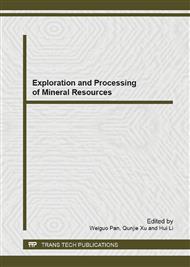p.34
p.38
p.42
p.46
p.51
p.56
p.62
p.66
p.70
Deposition Characteristics and Exploration Significances in Shallow-Water Delta Deposits of the First Member of Dongying Formation, Esso3d Area, Liaodong Bay Basin
Abstract:
As the escalating hotspot and key object of hydrocarbon exploration, research of shallow-water delta deposits in China have made breakthrough in both in production and efficiency. Numerous results in Bohai Bay Basin show that the conditions of shallow-water delta sandbodies are widespread in late Paleogene and Neogene. In this paper, we analyzed the geological evidences, deposition microfacies and favorable reservoir conditions from structural phases, palaeontological characteristics, depositional characteristics and geophysical characteristics (stacking patterns of wireline logs and seismic reflection characteristics). The results indicate that shallow-water delta deposits usually develope in shallow-water area where exits flat and broad terrain, arid and hot paleoclimate, turbulent lake level and ample provenance. As for the reservoir conditions, rivers brought large amounts of organic matter and minerals into the lake, which aided in bringing up organisms. All these organisms provided basis for petroliferous source rocks. The mudstone layers developed above the shallow-water deposits which helped to form vertical patterns of reservoirs. These conditions determine that shallow-water delta deposits consist of excellent reservoir combination, various types of traps, sufficient source rocks, smooth migration pathways, which provided broad exploration prospects.
Info:
Periodical:
Pages:
51-55
Citation:
Online since:
December 2013
Authors:
Price:
Сopyright:
© 2014 Trans Tech Publications Ltd. All Rights Reserved
Share:
Citation:


